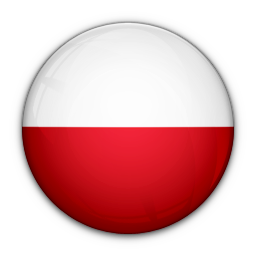Given the continued strategic importance of raw materials for the EU manufacturing industry [1], the Commission is implementing a wide range of actions under the EU Raw Materials Initiative to help ensure their secure, sustainable and affordable supply. The list of critical raw materials for the EU is a central element of this Initiative.
The Raw Materials Initiative was put forward in 2008 to tackle the challenges related to the access to raw materials. This Communication updates the 2014 list of critical raw materials. The primary purpose of the list is to identify the raw materials with a high supply-risk and a high economic importance to which reliable and unhindered access is a concern for European industry and value chains. Following an objective methodology the list provides a factual tool for trade, innovation and industrial policy measures to strengthen the competitiveness of European industry in line with the renewed industrial strategy for Europe [2], for instance by:
- identifying investment needs which can help alleviate Europe's reliance on imports of raw materials;
- guiding support to innovation on raw materials supply under the EU's Horizon 2020 research and innovation programme;
- drawing attention to the importance of critical raw materials for the transition to a low-carbon, resource-efficient and more circular economy.
The list should help incentivise the European production of critical raw materials through enhancing recycling activities and when necessary to facilitate the launching of new mining activities. It also allows to better understand how the security of supply of raw materials can be achieved through supply diversification, from different geographical sources via extraction, recycling or substitution.
The list is used by the Commission as a supporting element when negotiating trade agreements, challenging trade-distortive measures, developing research and innovation actions and implementing the 2030 Agenda on Sustainable Development and its Sustainable Development Goals. Critical raw materials are a priority area in the EU Circular Economy Action Plan [3] in order to foster their efficient use and recycling. The list may also be relevant for the purpose of the review of foreign direct investments in the EU [4], put forward in parallel with this Communication. It can also be used by Member States, companies and investors on a voluntary basis to inform them about potential raw material supply risks and related opportunities.
Raw materials, even if not classed as critical, are important for the European economy as they are at the beginning of manufacturing value chains. Their availability may quickly change in line with trade flows or trade policy developments underlining the general need of diversification of supply and the increase of recycling rates of all raw materials.
The 27 raw materials listed are critical for the EU because risks of supply shortage and their impacts on the economy are higher than those of most of the other raw materials.
The 2017 criticality assessment was carried out for 78 raw materials. The extended scope includes nine new materials as compared to 2014 assessment [5].
| Raw materials |
Main global producers
|
Main importers
|
Sources
|
Import reliance rate* | Substitution indexes EI/SR** | End-of-life recycling input rate*** |
| Phosphate rock |
China (44%) |
Morocco (31%)
|
Morocco (28%) |
88% | 1.0 / 1.0 | 17% |
| Phosphorus |
China (58%) |
Kazakhstan (77%) |
Kazakhstan (77%) |
100% | 0.91 / 0.91 | 0% |
Notes:
(*) The 'Import reliance rate' takes into account global supply and actual EU sourcing in the calculation of Supply Risk, and it is calculated as follows: EU net imports / (EU net imports + EU domestic production).
(**) The ‘Substitution index’ is a measure of the difficulty in substituting the material, scored and weighted across all applications, calculated separately for both Economic Importance and Supply Risk parameters. Values are between 0 and 1, with 1 being the least substitutable.
The economic importance is corrected by the Substitution Index (SIEI) related to technical and cost performance of the substitutes for individual applications of each material. The supply risk is corrected by the Substitution Index (SISR) related to global production, criticality and co-/by-production of the substitutes for individual applications of each material.
(***) The ‘End-of-life recycling input rate’ measures the ratio of recycling from old scrap to EU demand of a given raw material, the latter equal to primary and secondary material supply inputs to the EU.
Source: compiled on the basis of the Final Report of the 'Study on the review of the list of Critical Raw Materials' 2017.
Reference:
https://eur-lex.europa.eu/legal-content/EN/TXT/?uri=CELEX%3A52017DC0490
---
[1] However, coking coal, which was on the 2014 list of critical raw materials for the EU, is considered a borderline case. Although it narrowly misses the economic importance threshold, for the sake of caution, coking coal is kept on the list of critical raw materials for the EU and thus included in the table. However, it will be phased out from the next list should it fail to meet the criteria in full.
[2] Dysprosium, Erbium, Europium, Gadolinium, Holmium, Lutetium, Terbium, Thulium, Ytterbium, Yttrium
[3] Lanthanum, Cerium, Praseodymium, Neodymium, Samarium
[4] Palladium, Platinum, Rhodium, Ruthenium, Iridium
[5] Abiotic: Aggregates, Bismuth, Helium, Lead, Phosphorus, Sulphur; Biotic: Natural cork, Natural teak wood, Sapele wood.
[6] Commission's Communication 'Closing the loop – An EU action action plan for the Circular Economy' (COM(2015) 614)
[7] Commission's Proposal for a Regulation of the Parliament and of the Council establishing a framework for screening of foreign direct investments in the European Union (COM(2017) 487)
[8] Commission's Communication 'Investing in a smart, innovative and sustainable industry: A renewed EU Industrial Policy Strategy' (COM(2017) 479)
[9] According to the VDI Centre for Resource Efficiency (VDI ZRE), materials are the main cost factor in the manufacturing sector (44%, compared to 18% for labour, 3% for taxes and 2% for energy).
| Attachment | Size |
|---|---|
| com_2017-490_critical_raw_materials_EN.pdf | 428.75 KB |






















